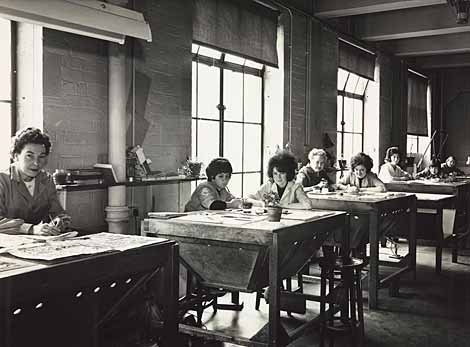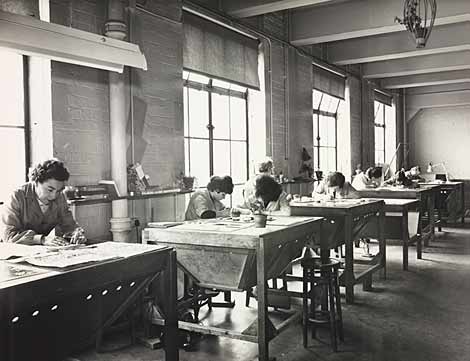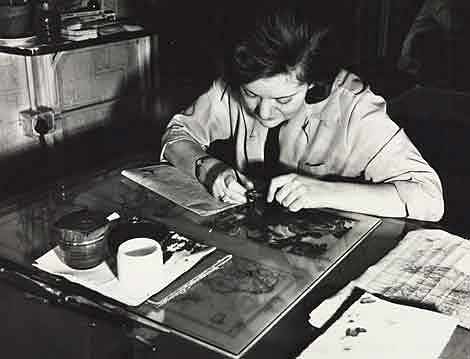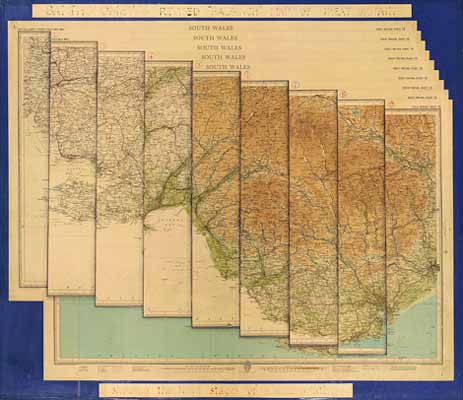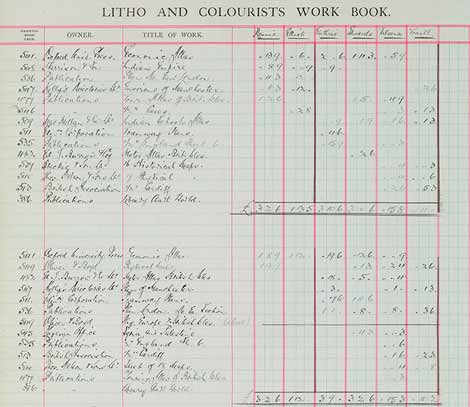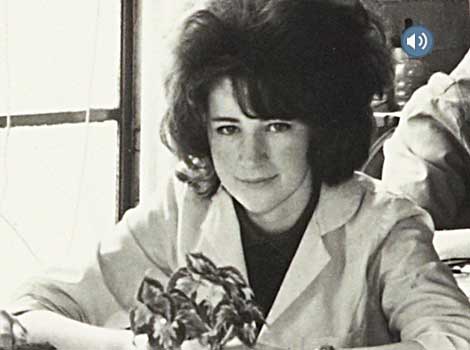The Colourists' Room
The colourists — an all-female department — had one of the most technically challenging roles at Bartholomew's, as well as having one of the most confusing titles.
Colourists did not add the colour to the maps themselves — they helped to build up the coloured areas of a map during the printing process.
The colourists' room
Bartholomew's colourists in their Duncan Street office. This photo appears to date from the 1960s.
Natural light was complimented by what are known as 'shining-up tables', which the women can be seen working on here.
Colourists at work
Bartholomew's colourists in their Duncan Street office, possibly in the 1960s.
Colourist Wilma Dinning
This photo shows Bartholomew colourist Wilma Dinning as she works on a map.
When the photo was taken, the colourists worked on glass printing plates. These plates could be lit from below, making it easier for the colourists to see what they were doing.
Colourist Edith McMunagle
Edith McMunagle, one of Bartholomew's colourists. She is using a magnifying glass to help her with her intricate work.
Nine stages of colour printing
An exhibition board made by Bartholomew. It demonstrates the nine stages of printing which maps like this went through.
The lithographic artists were responsible for the earlier stages of printing, which focus on the details in black, such as roads and place names. The colourists were responsible for the later stages, when the colours were applied to the map.
The board shows how maps like this were gradually built up, with more and more detail added until the map was finished.
Colourists' and litho artists' workbook
This is part of a page from a colourists' and litho artists' work book from 1918. It includes details such as the name of the client, the title of the work and the name of the colourist working on the job.
This page shows that a colourist would typically work on more than one map at a time, sometimes up to 10.
Staff recording
Colourists Doris Crook and Fiona Macpherson describe the high-quality brushes they used at Bartholomew's.
Staff recording
Colourist Doris Crook talks about starting her apprenticeship at Bartholomew's.






